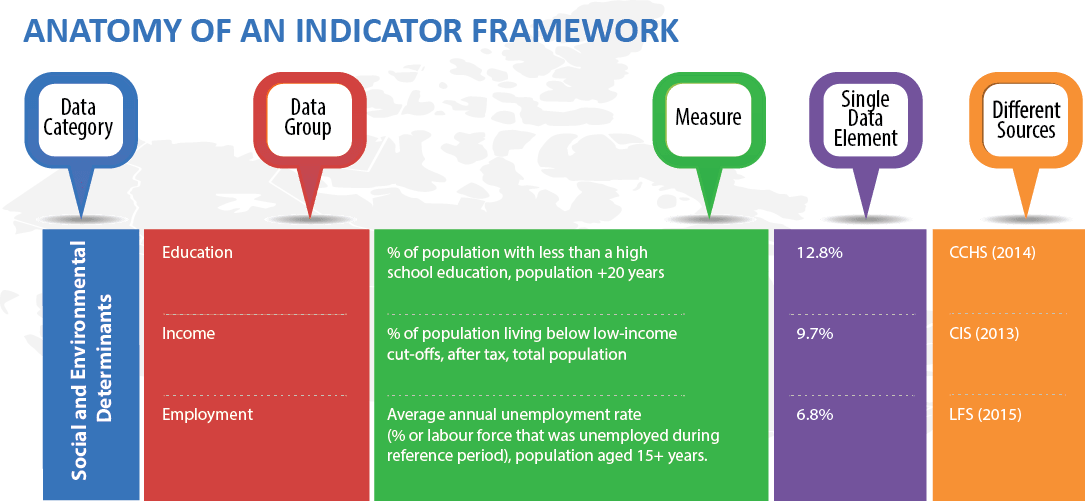Data Blog
You’re reading our Data Blogs, a great way of getting quick facts, and the latest data, on different public health topics.
What is an Indicator Framework? Published: ()
An indicator framework answers the call for easily digestible data. If you’re one to peruse scientific data, you may already know what an indicator framework is. For those who are new to the concept, let’s break it down.
- An indicator is a single data element – a snapshot of the state, level or measure of something.
- A framework is simply the structure of “a system, concept, or text”.
An indicator framework is an organized way to view data from different sources. It is a simple and concise way to present gathered data and help show the relevance and connection between different indicators. In a framework, data can be grouped or categorized and are often shown alongside detailed descriptions of associated measures and methods of calculation.

Table 1: Anatomy of an Indicator Framework
| Data Category | Data Group | Measure | Single Data Element | Different Sources |
|---|---|---|---|---|
| Social and Environmental Determinants | Education | % of population with less than a high school education, population aged 20+ years. | 12.8% | CCHS (2014) |
| Income | % of population living below low-income cut-offs, after tax, total population. | 9.7% | CIS (2013) | |
| Employment | Average annual unemployment rate (% of labour force that was unemployed during reference period), population aged 15+ years. | 6.8% | LFS (2015) |
How does this help make scientific data more easily accessible?
An indicator framework can be tailored to showcase the most important data from a report. Instead of skimming through 50+ pages for the three statistics you need, you can view them all on one page, and even compare them with others that you may not have considered.
There you have it! All the data you need - bite sized.
So what do indicator frameworks look like anyway? Here are some cool examples:
Canadian Chronic Disease Indicators
The Canadian Chronic Disease Indicators (CCDI) is a comprehensive pan-Canadian resource on the burden of chronic diseases, injuries and associated determinants. The Framework includes a core set of indicators and specific measures which are grouped into six core domains: Social and environmental determinants, early life/childhood risk...
Positive Mental Health Surveillance
The Positive Mental Health Surveillance Indicator Framework (PMHSIF) is a pan-Canadian resource on positive mental health outcomes and associated risk and protective factors. Positive mental health is a state of well-being that allows us to feel, think, and act in ways that enhance our ability to enjoy life and deal with the challenges we face. The PMHSIF includes a core set of indicators grouped...
- Human Rights Education Indicator Framework
- Indicator and Monitoring Framework for the Global Strategy for Women's, Children's and Adolescents' Health (2016-2030)